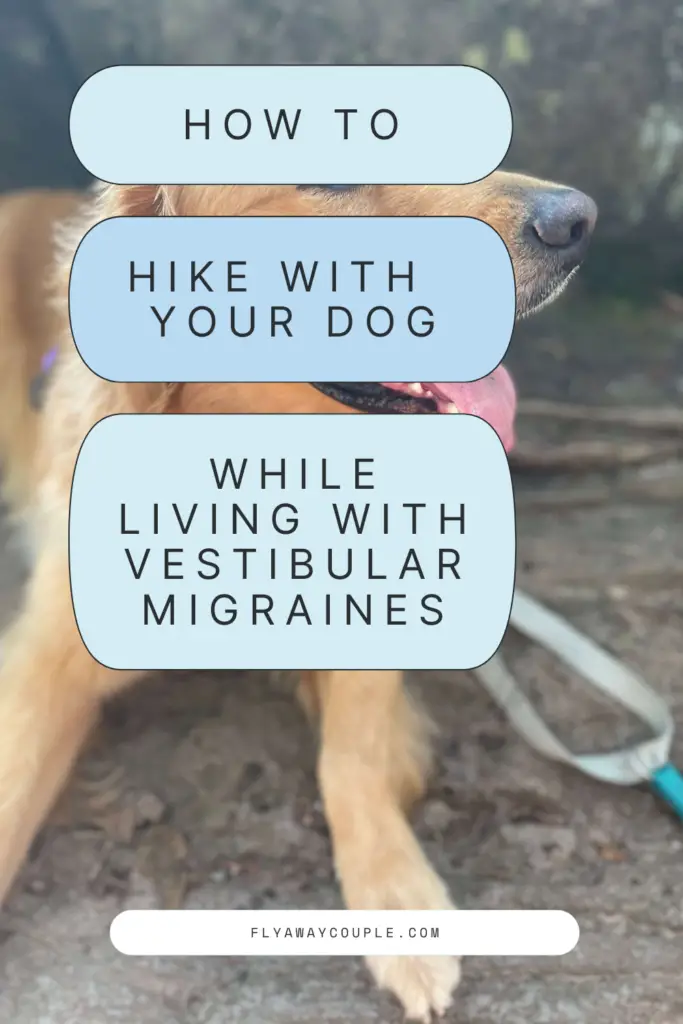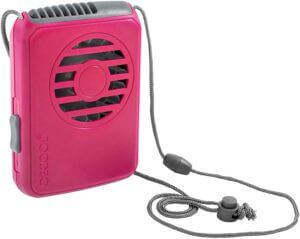Ok, ya’ll – we did it! We survived our 6-mile hike!
Did you know that (according to the CDC) 10% of Americans have an invisible illness/disability?
Many disabilities can be visually identified because they affect a person physically. There are many disabilities that are unseen. These are “invisible” and affect the way a person goes about everyday life.
Unfortunately, many people are accused of faking their symptoms. Some are told the pain, dizziness, etc is “in their head.” From the outside looking in, people with invisible illnesses appear healthy

That being said, vestibular migraines have made extended and vigorous activity more challenging, but not impossible. Life experiences and my career path as a physical therapist have aided in my determination to push myself and improve each day.
I can proudly say I accomplished this 6-mile hike with my 2-year-old fur baby, Woody. (A few seated rest breaks may have been involved… but that’s okay!) This was also an accomplishment for Woody, considering he could not walk to the mailbox when we rescued him!
Some of the links may be affiliate links, which just means I get a small commission at no extra cost to you!

These extra challenges have made me more determined to overcome these difficult obstacles
FlyawayCouple
What is an “invisible” illness?
An “invisible” illness is simply a medical condition that is not visible to the human eye but impairs a person’s activities of daily living. Diabetes? Autoimmune disorder? Fibromyalgia? Dementia? Heart Failure? They can qualify as “invisible” illnesses if they affect the way a person functions in everyday life.
What are vestibular migraines?
At the age of 7 years old, I was diagnosed with migraines described as atypical, acephalic, and vestibular in nature. I even have been diagnosed with mild neurocardiogenic syncope – really, no one was quite sure what I had as I wasn’t textbook. Trust me, as a medical professional, almost NOBODY is textbook.
People who get vestibular migraines share the common symptom of dizziness. Some people may get a headache, but it is not a requirement. These migraines can last anywhere from 5 minutes to 72 hours on average!
What are migraine triggers?
Everyone is different. Triggers can include the weather, barometric pressure, diet, stress, schedule changes, hormones, smell, and exercise. My triggers include stress, heat, and certain forms of exercise with a quick spike in heart rate.
Research has shown that recumbent biking is a great form of exercise for those with vestibular migraines. While exercise can be a trigger, finding the right type, intensity, and frequency is important to see benefits in brain health.


Recommendations for other migraineurs?
- Learn your triggers and be pro-active
Some triggers are easier to recognize than others. Start a migraine diary and with time you should see a pattern. Document the time of day, weather, and what you were doing at the time of the attack. There are many migraine tracking apps on both the iPhone and android. I’ve used migraine buddy and have been pleased with it. You can check out even more migraine tracking app suggestions here.
Speaking of migraine triggers, I’ll let you in on some of my secrets. I am very sensitive to the heat, making NC summers my worst enemy ever. Thankfully, I have found some on-the-go cooling agents to help battle this trigger:
Recommended Cooling Products

The O2 Cool Fan is battery powered and comes in multiple colors. It easily hangs around your neck for on-the-go activities. I have worn this fan many times when treating patients and find it very helpful.

I also really like using these cooling bandanas. I prefer this type because all you need is some ice water to ignite the cooling process. For many cooling scarfs, you have to leave them in a freezer and then they don’t stay cool long enough.
For these cooling bandanas, just dip them in some ice water for 3-5 minutes and you are ready to go! Personally, I like to leave them in a little longer than the recommended 3-5 minutes!
- Pace yourself
Take your time. It’s okay if you can’t go as quickly or need more rest breaks. I brought up the rear on our hike… and maybe complained a bit too. Also, listen to your body. If you need to turn around, that’s okay. You can try again on another day!
- Communicate
Most likely, people can’t read your minds. Communication is key. I have learned throughout the years that it is okay to admit to others that you do not feel well. People want to help, but they are unable to provide the care that you need if you do not communicate what you need and when you need it.
- It’s okay to try again later
If you don’t accomplish what you want on the first try, that’s a ok. Come back more determined the next time and keep pushing little by little until you can reach your goal.
- Have fun!
Tips for hiking with your dog
Let’s talk about our dog, Woody. We rescued him when he was 7 months old. He was overweight and had never participated in any form of exercise. That being said, he could barely walk further than the mailbox. Poor thing.
Fast forward to present day where wild man goes to doggy day care and can now check hiking off of his bucket list. He’s living the doggy dream.
Recommendations for first first-timee dog hikers?
- Water. Lots of water
Woody drinks like a fish. He drank 3 water bottles during our hike and could probably have had more. Make sure to bring enough water for you, and also your dog. There are some great travel dog bowls for hiking. Don’t want to get dehydrated!
- Bring a better leash
So Woody’s leash walking skills are… special. He’s even been seen by a few trainers who have provided leash walking tips. His biggest struggle is being leash reactive. This means that when he sees another dog, he gets frustrated by not being able to say hi and starts lunging forward. It’s not a pretty sight.
For our neighborhood walks and community outings, we have cycled through using a no pull harness, slip lead, and even a prong collar. Don’t worry, the prong collar doesn’t hurt him. He’s so stubborn that he forgets it’s even on him half the time.
What we would do differently
Well..hiking is a different ball game. We had him on his no-pull harness and 4ft leash. Let me tell ya, I think he did great. However, a 4ft leash is too short for hiking. Next time I would invest in a longer leash to give him some more freedom to explore.
- Treats
I’m all about reinforcing good behavior. Woody is super food motivated so he’ll do anything for food.
I always read about treat pouches, but never purchased one because I didn’t feel like spending money on something that looked like a fanny pack to hold my dog treats. Something that I purchased and recommend is a treat pouch that attaches to the leash. I find it super helpful and use it on walks, hikes, everyday outings, etc. It’s typically less than $10 and well worth the buy if you are looking for a way to hold some treats and provide a positive reward if your dog is super food motivated too!
- Go Early
I am not a morning riser. You will, however, thank me if you suck it up and just go early. Going early was a great choice, especially for a leash reactive dog and also because COVID-19 is still a thing. Less crowds + cooler weather = more enjoyable.

Do you have any interesting hiking stories?
What are the triggers for vestibular migraine?
Everyone is different. Triggers can include the weather, barometric pressure, diet, stress, schedule changes, hormones, smell, and exercise. My triggers include stress, heat, and certain forms of exercise with a quick spike in heart rate.
What are vestibular migraines?
People who get vestibular migraines share the common symptom of dizziness. Some people may get a headache, but it is not a requirement. These migraines can last anywhere from 5 minutes to 72 hours on average!
Do dogs need snacks on hikes?
Dogs need water. Make sure to bring enough water for you, and also your dog. There are some great travel dog bowls for hiking. Don’t want to get dehydrated!
And please do me a little favor and share this article with others, for there’s a good chance that it will help them with their travels!




Great ideas, and super proud of you!